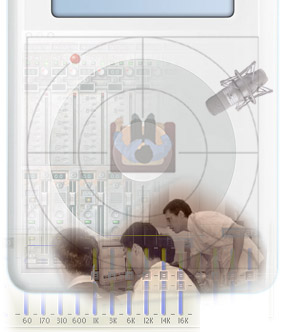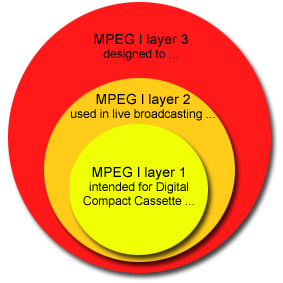

What is MP3
MP3 is the de facto standard for storing and sharing music files on computers. On the surface it is simply a file format, like JPEG
. However, it is not any old file format, it is a highly sophisticated format that can require a great deal of computation to create. The main advantage is that MP3 files are compressed - they take up less space than other sound file formats (see "What's it Good For").
The term MP3 is an abbreviation for MPEG I layer 3 (MP3 does not mean MPEG III)
. MPEG (pronounced em' peg), in turn, is an acronym for Motion Pictures Experts Group which in practice refers to a group of international standards
used for audio/visual file formats. MPEG I layer 3 (mp3) coding is an advanced version of MPEG I layers 1 and 2. Essentially, it simply adds more steps in the encoding processes of the other two layers.
MPEG I layer 1 was intended for the Digital Compact Cassette, but is now virtually obsolete.
MPEG I layer 2 is used in live broadcasting. Because it is simpler than layer 3, it takes a short amount of time to encode, which makes it useful for live transmission. It was intended to be high quality, but to achieve this must be be used at high bit rates.
Finally, layer 3 was originally designed to offer high quality at low bit rates. The main difference from the other two layers is that it adds a more sophisticated perceptual model.
